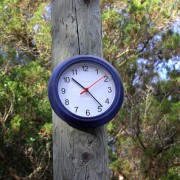Maths is Everywhere in the Home
Maths is everywhere in the home, and without you maybe even realising it, you are setting up your child with a solid Mathematical grounding.
How?
Let’s look at some of these concepts within the home and play environments and how it happens…
Shape recognition – at an early age we start to point out shapes to our children – ‘The orange is round and your plate is round’. ‘Would you like square or triangle/ sandwiches today?’
Volume – when cooking – ‘We need ½ cup of flour and one cup of milk – can you help to measure and pour them, please.
Conservation of mass – When you have one lump of play-dough , you can show your child how to roll it into many different shapes – a ball, a sausage, a dish shape, lots of tiny little eggs, but the mass doesn’t change despite the change in shape!
Patterns and sequences – Stacking blocks in colour sequence eg red, green, yellow, red, green, yellow. You could do the same with sequencing coloured beads onto a piece of string. Or placing blocks in a row with a circle first, then a triangle, then a square and repeat it. You could also draw a big circle followed by 2 little circles, and repeat it.
Counting – ‘You have two eyes and ears and one mouth’. ‘Lets count the stairs 1, 2, 3, 4’. ‘ You’re going to be 4 , so we need to get 4 candles from the packet to put on the cake.’ And even when we ‘count’ our children in terms of their behaviour eg ‘That’s one Layla!’ We then extend the counting when we attribute ordinals… eg “You were the first to brush your teeth tonight Sam – you beat Daddy!’
Measuring – Playing in the bathtub with water and plastic cups of different sizes …. ‘I need three yellow cups of water to fill up the green one. How many red cups to fill up the green one?
1:1 matching – when setting the table : “We need 4 plates – that’s one for Daddy, one for Mummy, one for Carl and one for you. Now we need 4 forks, one for Daddy” etc. Give your child 12 muffin papers to put into the muffin pan – one for each space.
Fractions – ‘Here’s half an apple for you, and half for Gerry.’ ‘ I’ve cut your sandwich into quarters, and mine into halves.’
Spatial Awareness – when doing jigsaw puzzles: ‘We need a small shape to fit in this space here. Yes, that’s the one but it’s not quite fitting – what do you need to do? (turn it around)’.
Problems Solving – ‘Here’s one orange (cut into four pieces) how can you share it with your brother?’ ‘Grandma will be here for dinner, so how may plates will we need on the table tonight?’ Allow your child to have the opportunity to explore, and maybe solve, simple problems.
Size – ‘Where’s the big ball?’ ‘That’s a little block’. ‘Can you please pass me the two small (toy) cars?’
Position – ‘Your book is on top of the desk’. ‘Can you see the bird flying above you?’ ‘You dropped your pencil – it’s next to the TV’. ‘Can you roll the ball towards me?’
Addition and Subtraction – ‘You have 2 books and I have 2 books – how many altogether?’ ‘I had 4 pieces of sandwich and I’ve eaten one – how many do I have now?’
Height – ‘Look how tall you are! You are taller than your little sister’. If you mark the height of the child on the doorway, they can ‘see’ how much they have grown from one birthday to the next, and also see their height relative to others.
Velocity – ‘Wow, look at that fast car!’ ‘Can you see how slowly the worm is moving?’
Time – Even before children really understand what 5 minutes is or an hour, we introduce elements to them – eg ‘we will go to Nanny’s house after we’ve done the shopping.’ Today is Playgroup day and tomorrow we will go to the park.’
Many of the songs we sing to children involve Maths eg:
‘1 little, 2 little, 3 little Indians’ is about counting and sequence.
‘There were 10 in the bed and little one said Roll Over’ is about subtraction.
‘Baa Baa Blacksheep’ is about colour and 1:1 matching.
‘Twinkle Twinkle, Little Star’ – is about position and shape.
Maths is everywhere! You didn’t know you were a Maths teacher – did you?
Happy Mathematical Parenting!







